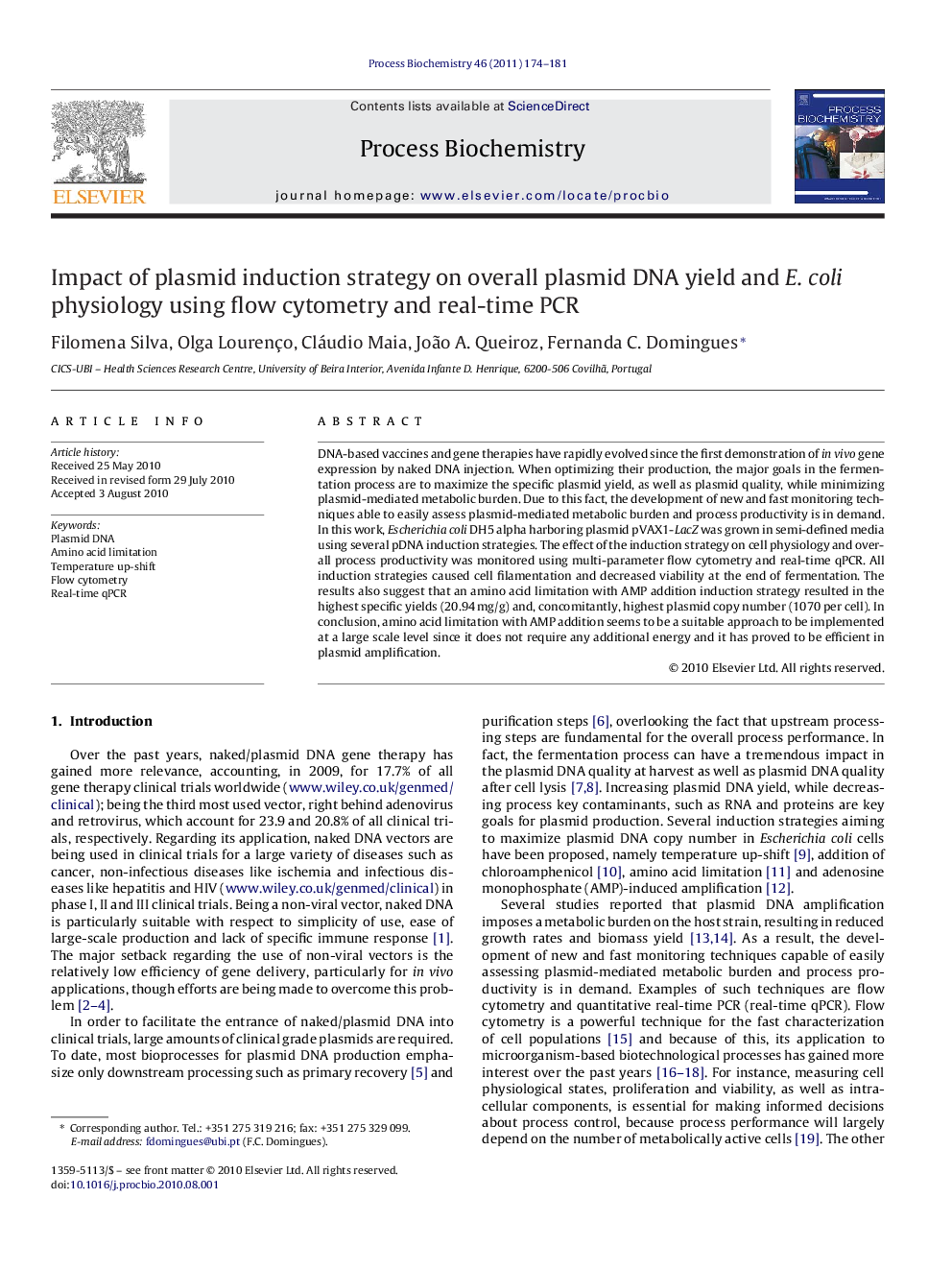| Article ID | Journal | Published Year | Pages | File Type |
|---|---|---|---|---|
| 35372 | Process Biochemistry | 2011 | 8 Pages |
DNA-based vaccines and gene therapies have rapidly evolved since the first demonstration of in vivo gene expression by naked DNA injection. When optimizing their production, the major goals in the fermentation process are to maximize the specific plasmid yield, as well as plasmid quality, while minimizing plasmid-mediated metabolic burden. Due to this fact, the development of new and fast monitoring techniques able to easily assess plasmid-mediated metabolic burden and process productivity is in demand. In this work, Escherichia coli DH5 alpha harboring plasmid pVAX1-LacZ was grown in semi-defined media using several pDNA induction strategies. The effect of the induction strategy on cell physiology and overall process productivity was monitored using multi-parameter flow cytometry and real-time qPCR. All induction strategies caused cell filamentation and decreased viability at the end of fermentation. The results also suggest that an amino acid limitation with AMP addition induction strategy resulted in the highest specific yields (20.94 mg/g) and, concomitantly, highest plasmid copy number (1070 per cell). In conclusion, amino acid limitation with AMP addition seems to be a suitable approach to be implemented at a large scale level since it does not require any additional energy and it has proved to be efficient in plasmid amplification.
